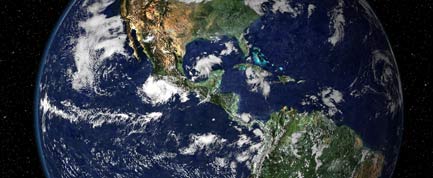New Measurement: Earth Smaller Than Thought

New measurements of Earth’s size show our home planet is a tad smaller than previously thought.
Earth is generally agreed to have a diameter of about 7,900 miles and a circumference of about 24,900 miles. The new findings, detailed in the latest issue of the Journal of Geodesy, suggest our planet is some millimeters smaller than previously thought.
Researchers at the University of Bonn in Germany used a relatively new technique, called Very Long Baseline Interferometry (VLBI), to calculate Earth’s girth. VLBI relies on a network of more than 70 radio telescopes worldwide that receive radio waves emitted by quasars, which are galaxies with radiation-spewing supermasssive black holes at their centers.
Because the radio telescopes are spread far apart, each one receives the same signal at slightly different times. “From this difference, we can measure the distance between the radio telescopes … to the preciseness of two millimeters per 1,000 kilometers,” said study leader Axel Nothnagel.
The researchers also found that Europe and North America are drifting apart from each other at a rate of about 0.7 inches per year.
Earth’s circumference varies depending on how scientists measure it because it is not a perfect sphere. Rather, our planet's rotation causes the equatorial region to bulge, making it an oblate spheroid that resembles a vertically squashed beach ball.
Earth is also lumpy, with mass distributed unevenly both inside the planet and on its surface. These two things together means gravity varies from point to point on Earth, so that your weight can actually vary from one location to another.
Get the world’s most fascinating discoveries delivered straight to your inbox.
Planet Earth: A Year of Pictures Weird Gravity in Canada Blamed on Hefty Glaciers Image Gallery: Earth As Art



